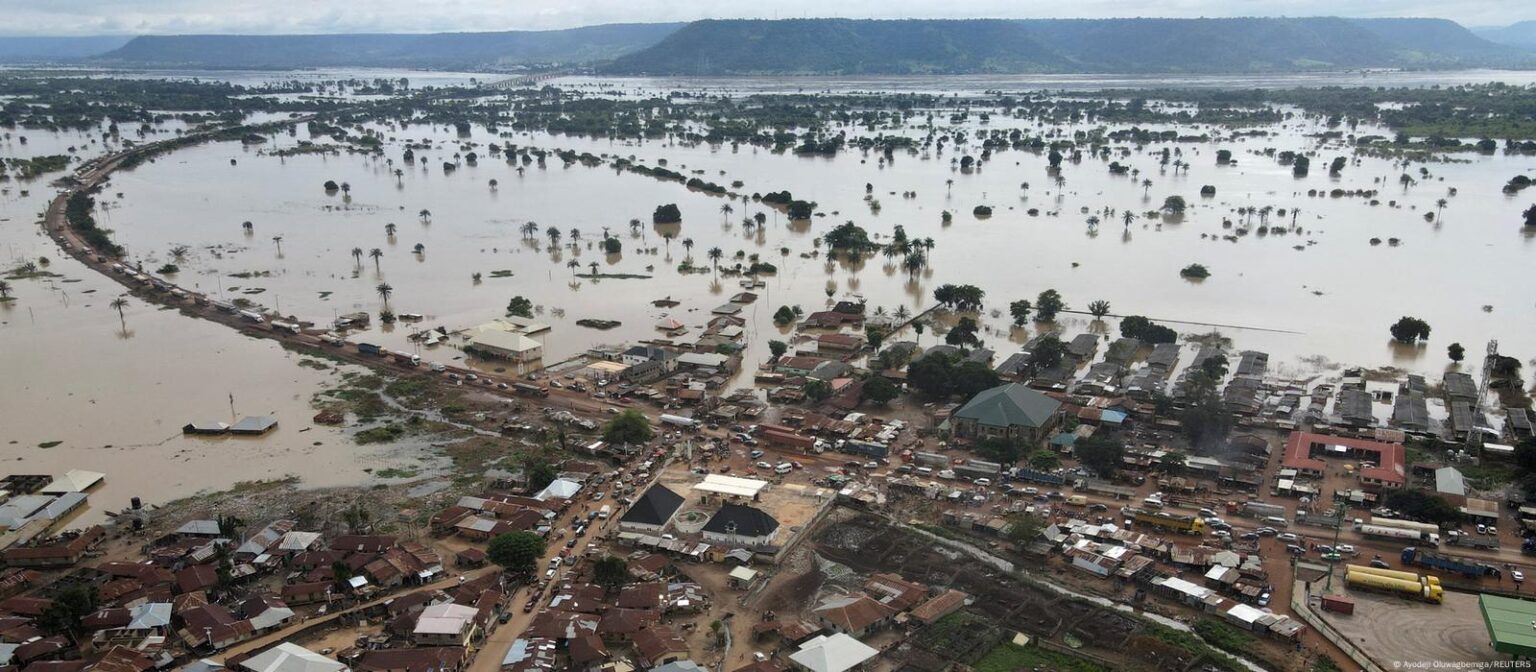By Trésor Daniel Mefire
A sobering new study has sounded the alarm on the rising tide of catastrophic floods across Africa, with Cameroon emerging as one of the continent’s most affected countries. The report, authored by researcher Trésor Daniel Mefire, paints a grim picture of worsening climate impacts, underdeveloped infrastructure, and fragile governance systems overwhelmed by surging waters.
“Flooding represents not just an environmental hazard but a systemic threat to Africa’s development,” Mefire wrote in the report titled Flooding in Africa and Cameroon. He highlights how extreme weather events, driven by a 1.1°C rise in global temperatures, are increasingly unleashing chaos on vulnerable regions with limited capacity to respond.
According to the World Bank, floods now cause an estimated $82 billion in global damages annually. Africa, however, bears the heaviest burden. Between 2000 and 2025, flood-related displacements on the continent have surged by 300%, with the 2024 flood season setting records in 27 countries. Nigeria’s Mokwa region alone witnessed 159 deaths in one night, while South Africa’s Eastern Cape saw 86 lives lost in just 72 hours of torrential rain.
Cameroon, the report notes, is a microcosm of these challenges. Between 2024 and 2025, floods displaced over 1.1 million people, destroying homes, schools, healthcare centres, and vast stretches of farmland. The agricultural sector, which supports 70% of Cameroon’s population, was particularly hard-hit as 960,000 hectares of crops were lost.
Mefire attributes the intensification of floods to both natural and human factors. “Hydrological models show West African river systems now experience peak flows 94% stronger than in pre-industrial times,” he stated, adding that rapid urbanisation has further reduced the land’s natural ability to absorb rainfall. In major cities like Douala, the proliferation of concrete structures has slashed absorption capacity by up to 80%, turning rainstorms into deadly flash floods.
The secondary impacts are equally dire. “Cholera cases spike by 300% in flooded regions, and every major flood cuts GDP growth by an average of 2.7% in affected African countries,” Mefire explained.
Despite these grim statistics, the report offers a roadmap for action, with interventions outlined at global, continental, and national levels.
At the global level, Mefire calls for an urgent scale-up of climate finance. He proposes the establishment of a Global Flood Resilience Compact, which would compel developed countries to allocate at least 0.1% of their GDP to support drainage and early warning infrastructure in vulnerable nations. “Currently, adaptation finance meets only 12% of developing countries’ needs,” he noted.
He also advocates for AI-powered early warning systems, drawing from successful pilots in Bangladesh where real-time satellite integration has reduced flood fatalities by over 50%.
Regionally, the report urges the African Union to enforce transboundary water governance protocols, highlighting the Senegal River Basin as a model for how coordinated dam releases can reduce flood peaks. Urban planning reforms, such as Rwanda’s “Sponge City” approach that mandates permeable pavements and retention ponds, are also highlighted as effective tools to manage flood risks.
In Cameroon, Mefire recommends restoring 5,000 hectares of mangroves in the Wouri Estuary by 2030. This $15 million investment would not only act as a natural buffer against storm surges but also absorb up to 2 million tons of carbon dioxide. Additionally, training 20,000 farmers in climate-resilient agricultural techniques, including dyke farming, could boost food security and economic resilience.
“Without immediate action, the next decade could see flood damage in Africa double, erasing decades of economic progress,” Mefire warns. “But this crisis also presents an opportunity: to reimagine infrastructure, governance, and community resilience in ways that address both inequality and ecological breakdown.”
The report concludes that any meaningful progress hinges on local empowerment. While global agreements and regional strategies are critical, “all tiers must converge at community-level action where 80% of flood impacts occur,” the study notes.
With climate extremes no longer a distant threat but a present and accelerating crisis, Mefire’s research underscores a stark truth: the time for incremental change has passed. Only bold, coordinated efforts can prevent a future where floods wash away the hope of millions across Africa.
Source: Trésor Daniel Mefire, PDF Floods Flooding in Africa and Cameroon (2025).


